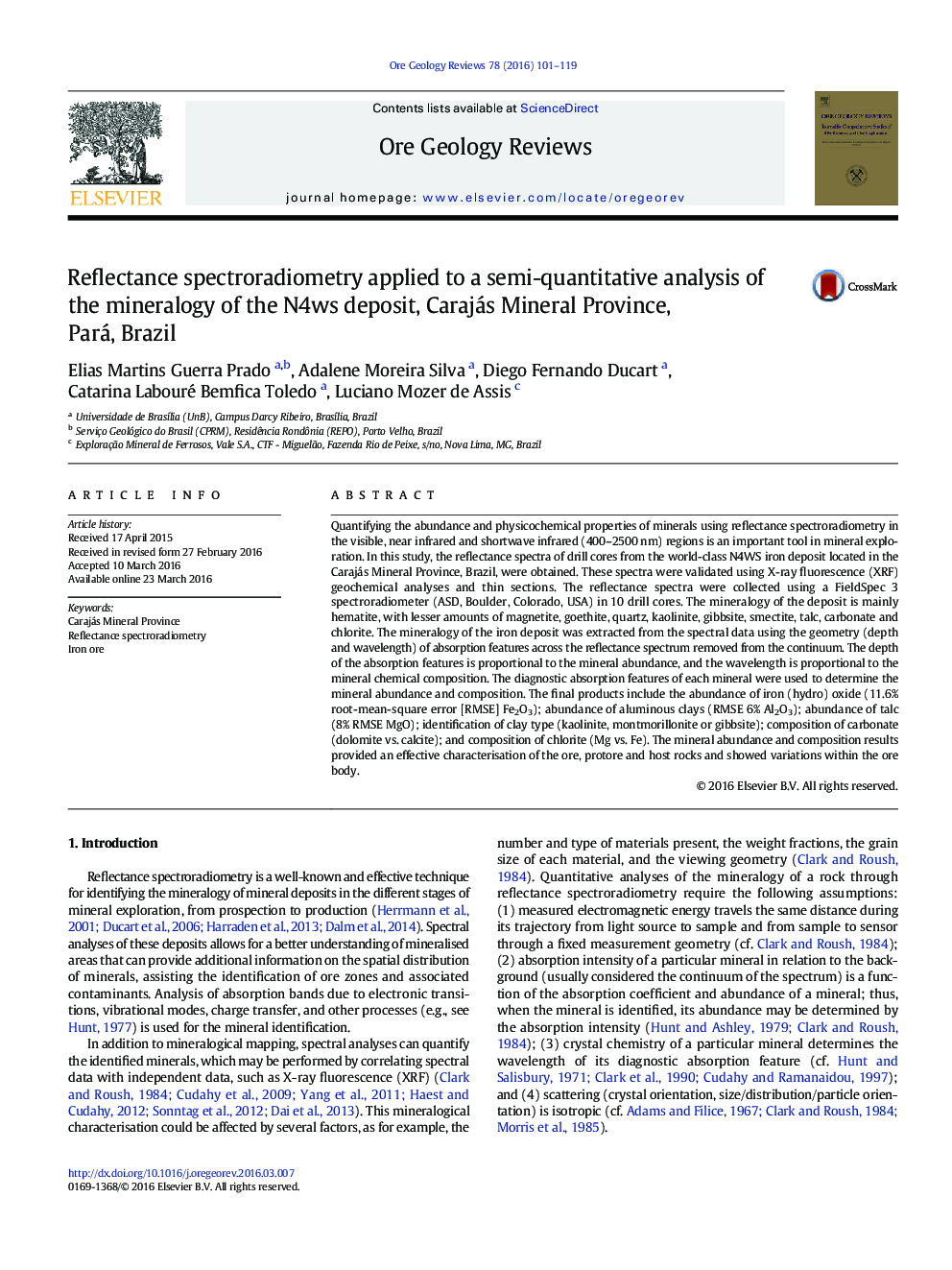| کد مقاله | کد نشریه | سال انتشار | مقاله انگلیسی | نسخه تمام متن |
|---|---|---|---|---|
| 4696842 | 1637228 | 2016 | 19 صفحه PDF | دانلود رایگان |

• Minerals that had not been described before were identified in these rock types, such as the talc in some JP samples
• Zones with different physical properties that are difficult to differentiate on core logging were distinguished
• Zones with higher oxide content were differentiated in the JP and FH intervals
• Zones with carbonate were differentiated in the JP intervals
• Chlorite composition was identified in the basalt intervals
Quantifying the abundance and physicochemical properties of minerals using reflectance spectroradiometry in the visible, near infrared and shortwave infrared (400–2500 nm) regions is an important tool in mineral exploration. In this study, the reflectance spectra of drill cores from the world-class N4WS iron deposit located in the Carajás Mineral Province, Brazil, were obtained. These spectra were validated using X-ray fluorescence (XRF) geochemical analyses and thin sections. The reflectance spectra were collected using a FieldSpec 3 spectroradiometer (ASD, Boulder, Colorado, USA) in 10 drill cores. The mineralogy of the deposit is mainly hematite, with lesser amounts of magnetite, goethite, quartz, kaolinite, gibbsite, smectite, talc, carbonate and chlorite. The mineralogy of the iron deposit was extracted from the spectral data using the geometry (depth and wavelength) of absorption features across the reflectance spectrum removed from the continuum. The depth of the absorption features is proportional to the mineral abundance, and the wavelength is proportional to the mineral chemical composition. The diagnostic absorption features of each mineral were used to determine the mineral abundance and composition. The final products include the abundance of iron (hydro) oxide (11.6% root-mean-square error [RMSE] Fe2O3); abundance of aluminous clays (RMSE 6% Al2O3); abundance of talc (8% RMSE MgO); identification of clay type (kaolinite, montmorillonite or gibbsite); composition of carbonate (dolomite vs. calcite); and composition of chlorite (Mg vs. Fe). The mineral abundance and composition results provided an effective characterisation of the ore, protore and host rocks and showed variations within the ore body.
Journal: Ore Geology Reviews - Volume 78, October 2016, Pages 101–119